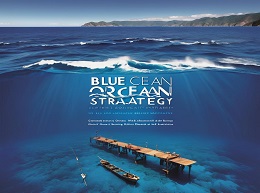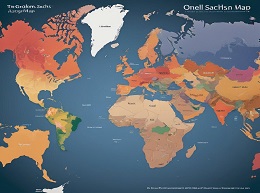Blue Ocean Strategy

"Blue Ocean Strategy" by W. Chan Kim and Renée Mauborgne presents a groundbreaking approach to strategy that challenges conventional thinking about competition and market boundaries. The authors argue that rather than competing in crowded, red ocean markets, businesses should seek to create uncontested, blue ocean markets where competition is irrelevant. In this comprehensive review, we'll explore the key concepts of "Blue Ocean Strategy," provide real-world examples, and reveal strategies for unlocking new market opportunities and driving innovation.
Understanding Blue Ocean Strategy:
Kim and Mauborgne introduce the concept of blue ocean strategy a framework for creating new market space and unlocking untapped demand.
Example:
Cirque du Soleil revolutionized the circus industry by combining elements of theater, music, and acrobatics to create a unique entertainment experience that appealed to a broader audience beyond traditional circus-goers.
Red Ocean vs. Blue Ocean:
The authors contrast red ocean markets, characterized by intense competition and shrinking profit margins, with blue ocean markets, where companies can create new demand and generate sustainable growth.
Example:
Southwest Airlines disrupted the airline industry by offering low-cost, no-frills flights targeting price-sensitive travelers, creating a blue ocean market distinct from traditional carriers competing in the red ocean of full-service airlines.
Value Innovation:
Kim and Mauborgne emphasize the importance of value innovation creating new value for customers while simultaneously reducing costs.
Example:
Nintendo's Wii gaming console introduced motion-sensing technology and family-friendly games, appealing to a broader audience of casual gamers and non-gamers, while also offering a lower price point compared to competing consoles like PlayStation and Xbox.
The Six Paths Framework:
The authors present the six paths framework for identifying blue ocean opportunities, including looking across alternative industries, strategic groups, and complementary products and services.
Example:
Cirque du Soleil explored new market opportunities by combining elements of the circus with theater and live entertainment, creating a unique value proposition that attracted a diverse audience.
The Four Actions Framework:
Kim and Mauborgne introduce the four actions framework for breaking the trade-off between differentiation and low cost, enabling companies to create innovative value propositions.
Example:
IKEA disrupted the furniture industry by offering stylish, affordable furniture with self-assembly packaging, eliminating costs associated with traditional furniture retailing and passing the savings on to customers.
Execution and Implementation:
The authors discuss strategies for effectively executing blue ocean initiatives, including overcoming organizational hurdles and aligning resources with strategic objectives.
Example:
Apple successfully executed its blue ocean strategy with the launch of the iPhone, creating a new market for smartphones with its innovative touchscreen interface and app ecosystem.
In conclusion, "Blue Ocean Strategy" offers a compelling framework for driving innovation and unlocking new market opportunities. By challenging traditional industry boundaries, focusing on value innovation, and executing with precision, businesses can create uncontested market space and achieve sustainable growth in today's competitive landscape.













